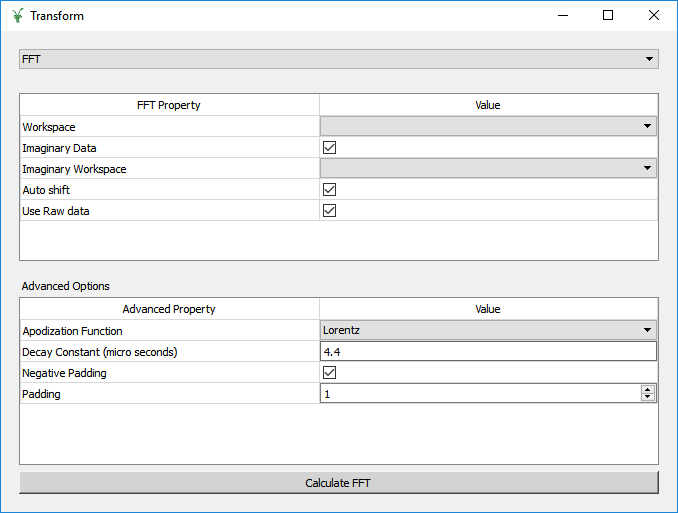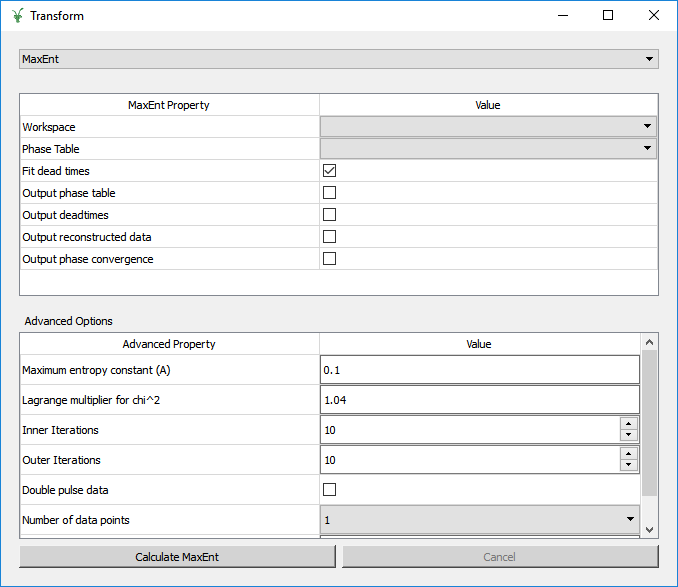\(\renewcommand\AA{\unicode{x212B}}\)
This tab is designed for the user to transform pre-loaded data into the frequency domain. At present there are two methods available, which the user can switch between by using the drop-down menu at the top of the tab.

In this mode the interface displays two tables, FFT and Advanced options. The FFT table contains all of the information required to produce a forward FFT. The Advanced Options table contains the information for adding padding and apodization functions to the data.
Workspace This selects the data to be transformed.
Imaginary Data If unchecked the FFT will be performed without an imaginary component.
Imaginary Workspace The imaginary component for the FFT.
Auto shift If this is checked it will automatically calculate and apply the phase shift, if this is unchecked the user can select a value (defaults to 0.0).
Fit To Raw Data If this is checked it will use the raw data for the FFT. If it is unchecked it will use the rebinned data as specified on the home tab. unchecked it will use data rebinned using the specifications from the home tab.
The Advanced Options table contains the information for adding padding and applying apodization functions to the data.
Apodization Function Selects the apodization function to apply to the data before performing the FFT.
Decay Constant The decay constant for the apodization function.
Negative Padding If this is checked it will add padding to both sides of the data.
Padding The amount of padding to be added to the data.
The Calculate button will execute the Padding and Apodization and then
FFT algorithms. The output workspace will be added to appropriate grouped workspace.

The maximum entropy method can be used to calculate the frequency domain spectrum. This option uses the MuonMaxent algorithm to calculate the frequency spectrum. The MaxEnt Property table contains the basic quantities used during the calculation.
Workspace Select the workspace for the transformation to be performed on.
Phase Table Select a phase table to be used for the initial phase values.
Fit dead times If checked this will fit for dead times.
Output (phase table/deadtimes/reconstructed data/phase convergence) If these are checked it will output the chosen results in the appropriate workspace group.
The advanced property table contains variables for users that would like more control over the calculation.
For large calculations the interface can be slow, therefore the Calculate button is disabled until the current calculation is complete.